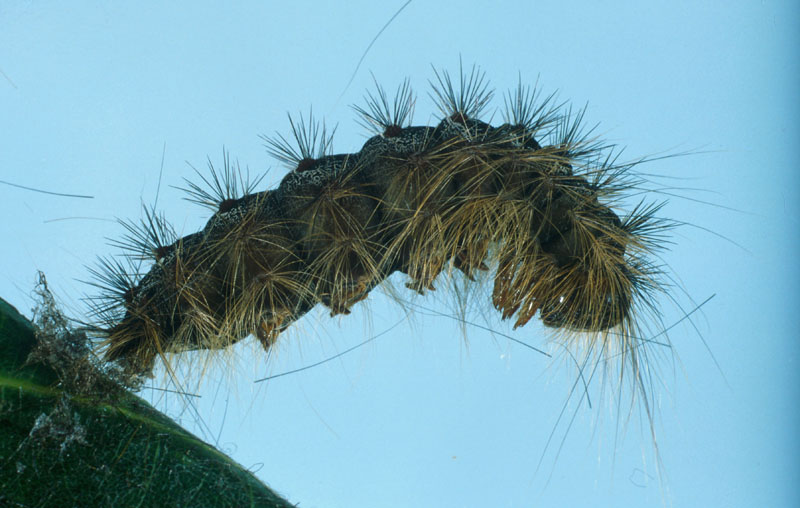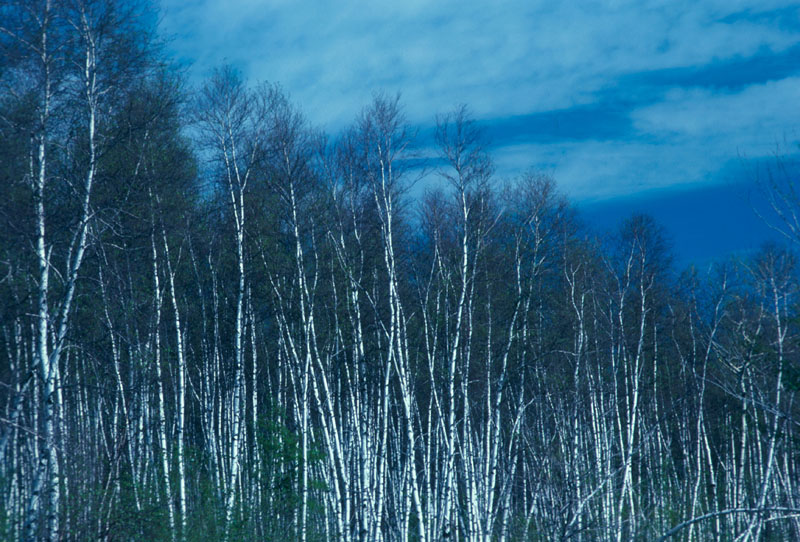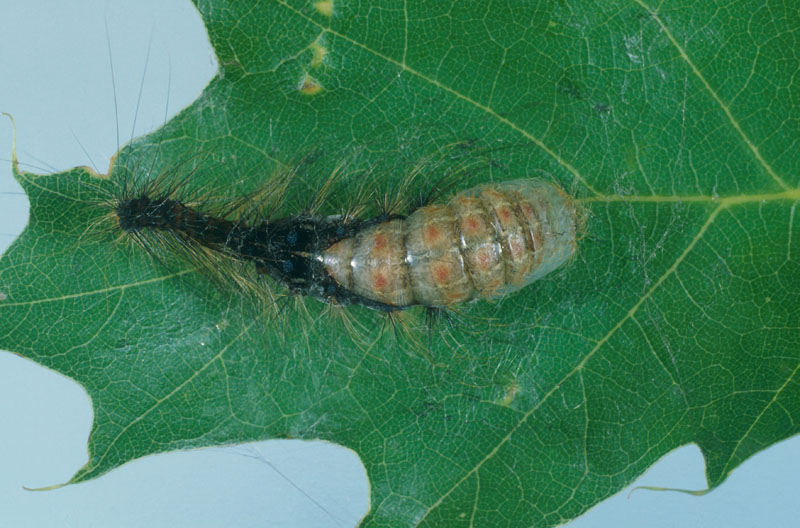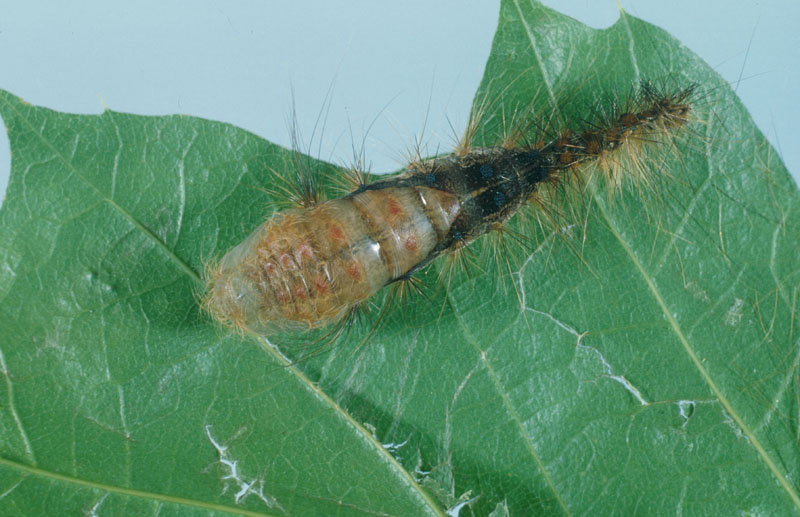Gypsy moth

- Order: Lepidoptera
- Family: Lymantriidae
- Latin: Lymantria dispar (Linnaeus)
- English: Gypsy moth
- French: Spongieuse
- Synonym(s): Porthetria dispar (Linnaeus)
Description
Distribution
Eastern Canada
Diet and feeding behavior
Phytophagous / Phyllophagous / Free-living defoliator
Micro-habitat(s)
Leaf, Needle
Damage, symptoms and biology
Gypsy moth damage is caused exclusively by the caterpillars, which feed on developing leaves in May. Newly hatched larvae are hairy and black and feed by chewing small holes in the surface of the leaves. Older larvae devour entire leaves. The body of the larvae are dark-coloured and hairy, with red and blue spots on the back. Full-grown larvae can be up to 65 mm long.
Another sign of gypsy moths is the presence, in late July, of spongy egg masses covered with tan or buff-coloured hairs from the female’s abdomen on the trunks and branches of trees or in forest debris near defoliated trees.
During severe outbreaks, trees and shrubs are completely defoliated over large areas. Despite the trees’ ability to produce a new crop of leaves over the summer, the damage causes significant growth loss. Understorey shrubs and plants may also be affected.
Mature larvae feed at night and congregate in shady areas during the day, particularly in the litter near the trunks of affected trees. When the tree is completely defoliated, the larvae vacate the tree and migrate in groups in search of new sources of food.
Upon completion of their development, the larvae pupate, often in the same shady areas where they take refuge during the day. The adults emerge in July. The females, which are too heavy to fly, lay up to 1000 eggs per mass, often near the pupation site. The insect overwinters in the egg stage.
Comments
A species of Eurasian origin, the gypsy moth was introduced to the United States in 1869 and has become one of the most serious defoliators of hardwoods in North America. This polyphagous insect also feeds on conifers.
The gypsy moth was first detected in Canada in 1912 in British Columbia, where egg masses had been accidentally introduced on young cedars from Japan. However, the first infestation in Canada occurred in 1924 in southwestern Quebec, near the U.S. border, followed by a second infestation in 1936 in New Brunswick. In both cases, the insect was eradicated through intensive egg mass removal campaigns. The insect was again reported in Quebec in 1955 and since then, has become established in southern Ontario, New Brunswick, Nova Scotia and British Columbia. Populations vary annually, depending on the region.
A quarantine pest, the gypsy moth is under the surveillance of the Plant Health and Production Division of the Canadian Food Inspection Agency (CFIA). Annual gypsy moth surveys have been conducted since 1954 using pheromone traps.
Because infestations can cover large areas, several Canadian provinces and U.S. states have developed aerial control programs. Since 1975 all populations of Gypsys Moth discovered in the province of British Columbia have been subject to eradication to prevent establishment of this species.
To protect isolated or ornamental trees, it is recommended that egg masses found in the fall on trees, stones or any other object be collected and destroyed. In June, mature larvae can be collected when they congregate in shady areas by banding the base of the trunks with tar paper.
Other resources
- Gypsy Moth - Lymantria dispar
(Canadian Food Inspection Agency) - Gypsy moth, regulated areas
(Canadian Food Inspection Agency)
Information on host(s)
Main Host(s)
American beech, apples, ashes, balsam fir, basswood, black hawthorn, black oak, bur oak, cherries / plums, chinquapin oak, cockspur hawthorn, Columbia hawthorn, dotted hawthorn, downy hawthorn, dwarf chinquapin oak, eastern hemlock, European black alder, fanleaf hawthorn, fireberry hawthorn, fleshy hawthorn, Garry oak, green alder, grey birch, hazel alder, hickory, larches / tamaracks, little-leaf linden, mountain alder, northern pin oak, pear hawthorn, pines, pin oak, poplars / aspens / cottonwoods, red alder, red maple, red oak, scarlet hawthorn, scarlet oak, Shumard oak, Siberian alder, Sitka alder, speckled alder, spruces, sugar maple, swamp white oak, trembling aspen, white birch, white elm, white oak, willow





